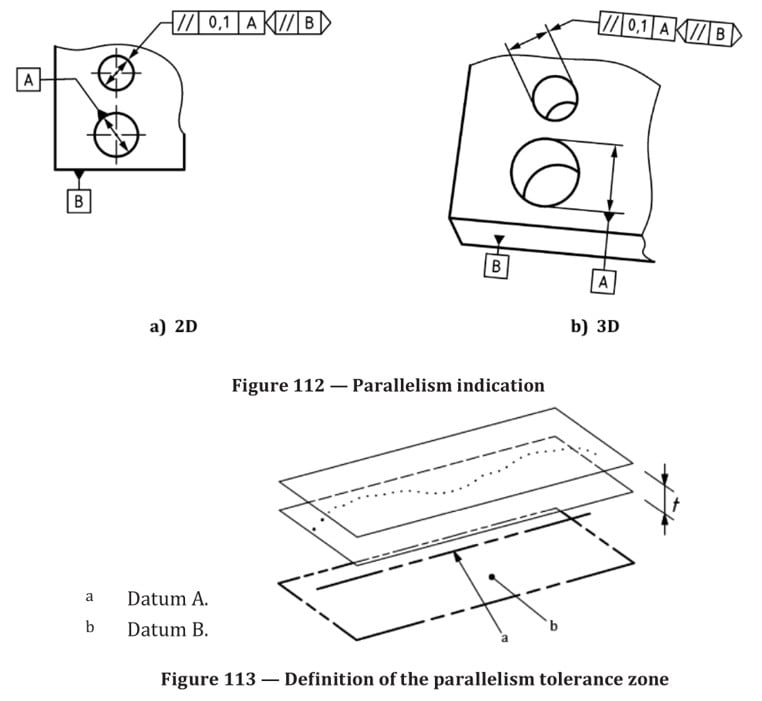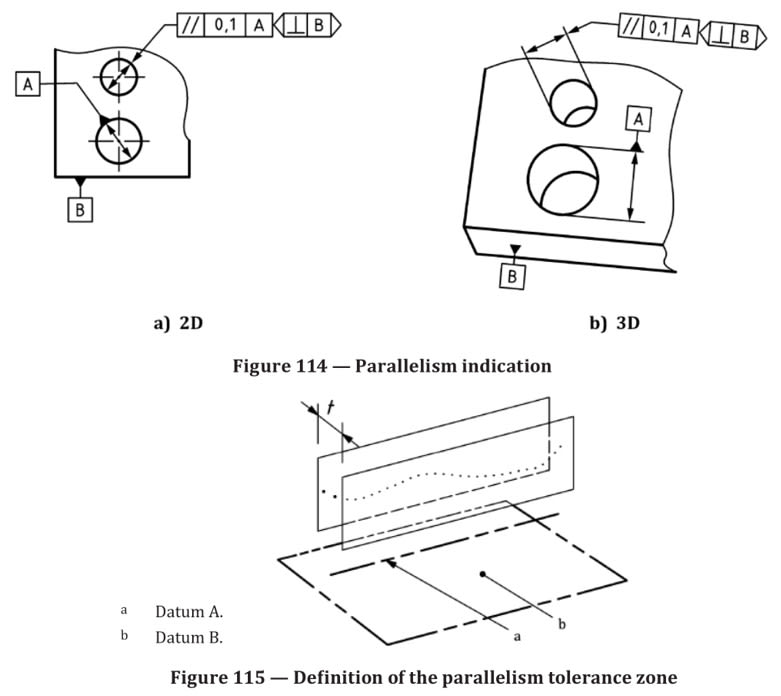Hi,
I'm trying to understand how previous editions of ISO 1101 specified the orientation of tolerance zones in the 2D case. Datum A indicates the center of the larger hole and both tolerance zones are parallel to it. Is B now the orientation plane? How does it constrain the tolerance zone further and where is this rule printed in ISO 1101:2012? For one zone it is parallel to B, for the other it's perpendicular so I guess the parallelism symbol only refers to A, not to B.
Edit: Also somewhere it is stated that the leader lines indicate the orientation of the tolerance zone. So there's no need for B here, I think.

Thanks.
I'm trying to understand how previous editions of ISO 1101 specified the orientation of tolerance zones in the 2D case. Datum A indicates the center of the larger hole and both tolerance zones are parallel to it. Is B now the orientation plane? How does it constrain the tolerance zone further and where is this rule printed in ISO 1101:2012? For one zone it is parallel to B, for the other it's perpendicular so I guess the parallelism symbol only refers to A, not to B.
Edit: Also somewhere it is stated that the leader lines indicate the orientation of the tolerance zone. So there's no need for B here, I think.

Thanks.


